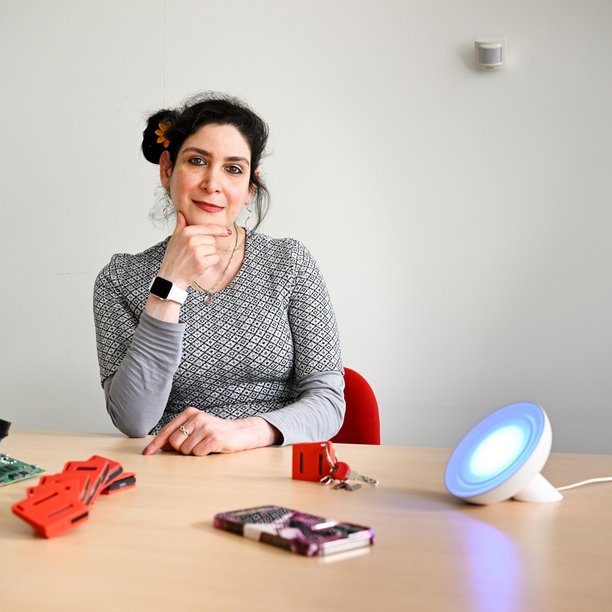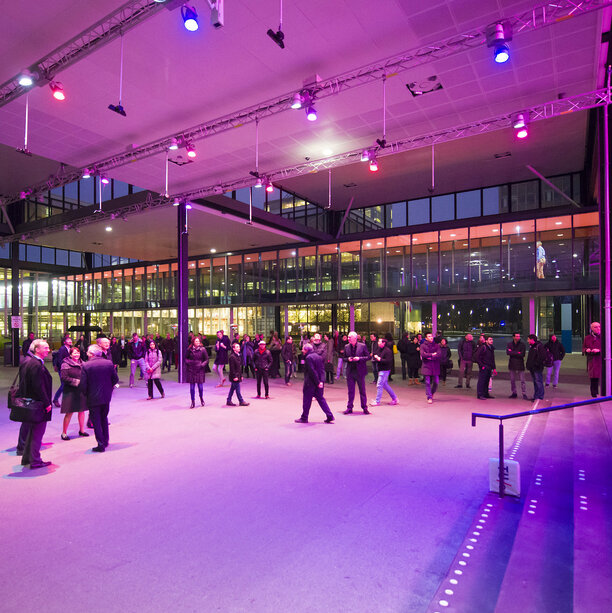Bright Environments
Ever since the light bulb was first discovered, we have turned lights on and off with a switch. Today, lighting systems are transforming into networked systems, offering a range of intelligent services and applications. Intelligent lighting technology allows many opportunities including autonomous lighting control, advanced user interaction styles and support for health and well-being through lighting. The Bright Environments (BE) research program develops unique models, technology and methods for controlling and interacting with intelligent indoor lighting systems of the future.
Research challenges
The overarching theme and BE focus: Based on the input from Ns Sensors and interactive controllers, control the setting of NL light sources to optimize the experience and wellbeing of NP people, and facilitate the intention of stakeholders, within constraints.
This supports a formalized approach of the problem, yet BE takes into account human aspects of experience and interaction.
Meet some of our researchers
Projects
Recent publications
-
Claudio Feliciani,Alessandro Corbetta,Milad Haghani,Katsuhiro Nishinari
Trends in crowd accidents based on an analysis of press reports
Safety Science (2023) -
Saeed Khalilian Gourtani,Nirvana Meratnia
ESCEPE: Early-Exit Network Section-Wise Model Compression Using Self-distillation and Weight Clustering
(2023) -
B.R.D. van Berlo,Yang Miao,Rizqi Hersyandika,Ben Willetts,Kai Mao,Amin Zare,Sofie Pollin,Nirvana Meratnia
26 GHz OFDM and 77 GHz FMCW Radar Dataset for Domain Shift Invariant Blockage Prediction
(2023) -
J.P. Linnartz,Carina Ribeiro Barbio Correa,Thiago Bitencourt Cunha,Eduward Tangdiongga,A.M.J. Koonen,Xiong Deng,Anteneh A. Abbo,Piotr Polak,Marcel Müller,Daniel Behnke
ELIoT: enhancing LiFi for next-generation Internet of things
EURASIP Journal on Wireless Communications and Networking (2022) -
Xiong Deng,Yixian Dong,Xihua Zou,Peixuan Li,Chen Chen,Ziqiang Gao,Thiago Bitencourt Cunha,Lianshan Yan,Jean-Paul M.G. Linnartz
Quadrature Signaling for Intensity Modulated and Direct Detection Visible Light Communications Based on Kramers-Kronig Relation
(2022) -
Jean-Paul M.G. Linnartz,Christoph Hoelen,Paul van Voorthuisen,Thiago Elias Bitencourt Cunha,Haimin Tao
LED assessment based on an improved quality factor for LiFi communication
(2022) -
Mushfiqul Anwar Siraji,Rafael Robert Lazar,Juliëtte van Duijnhoven,Luc J.M. Schlangen,Shamsul Haque,Vineetha Kalavally,Céline Vetter,Gena Glickman,Karin C.H.J. Smolders,Manuel Spitschan
Light exposure behaviour assessment (leba)
(2022)
![[Translate to English:] [Translate to English:]](https://assets.w3.tue.nl/w/fileadmin/_processed_/4/b/csm_LaPlace_Office%20Living%20Lab%20%284%29_9fa0bce223.jpg)

